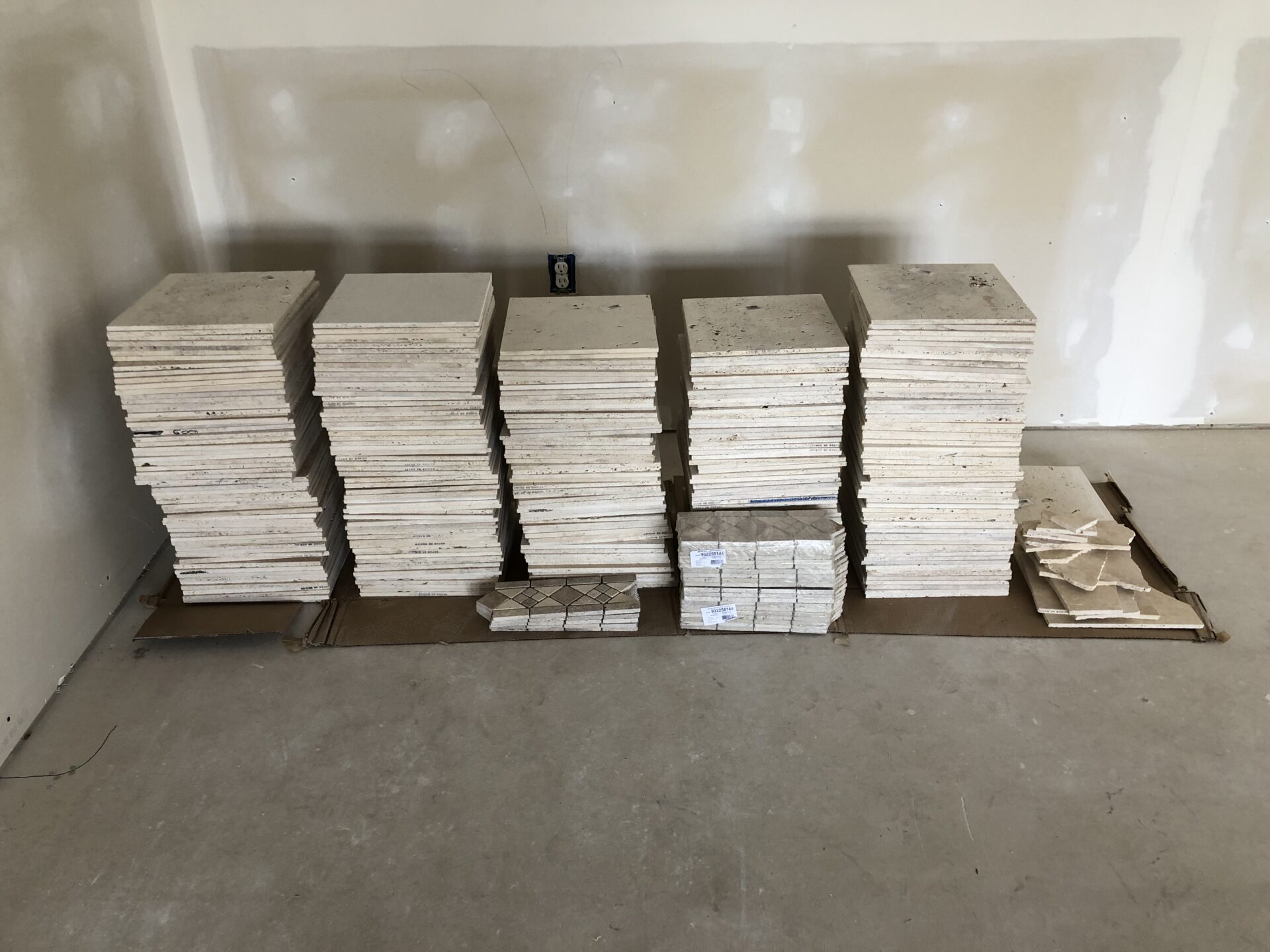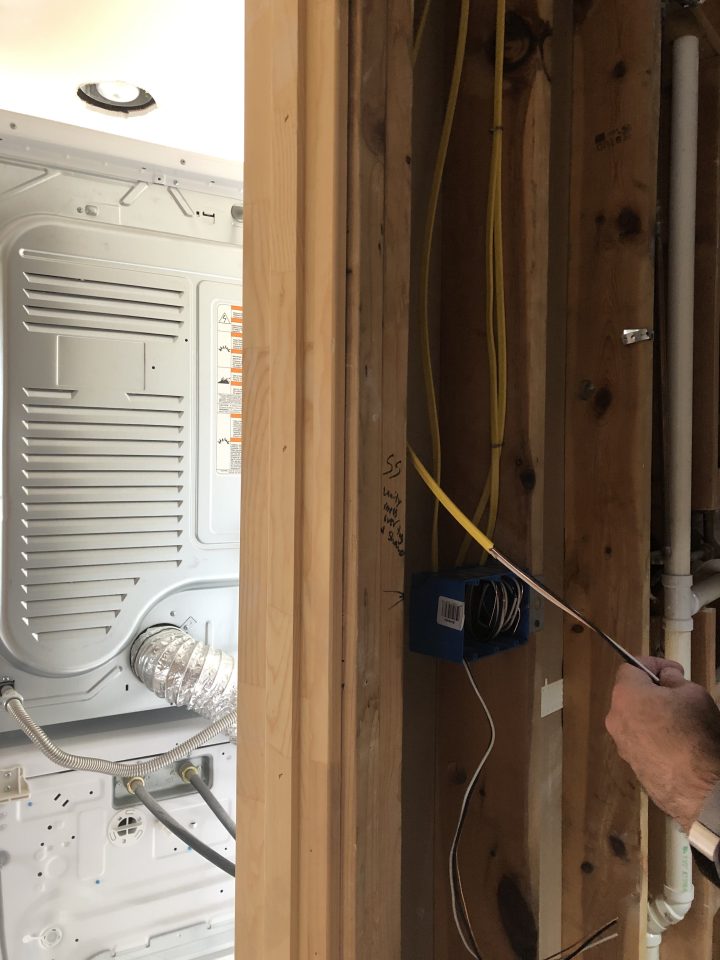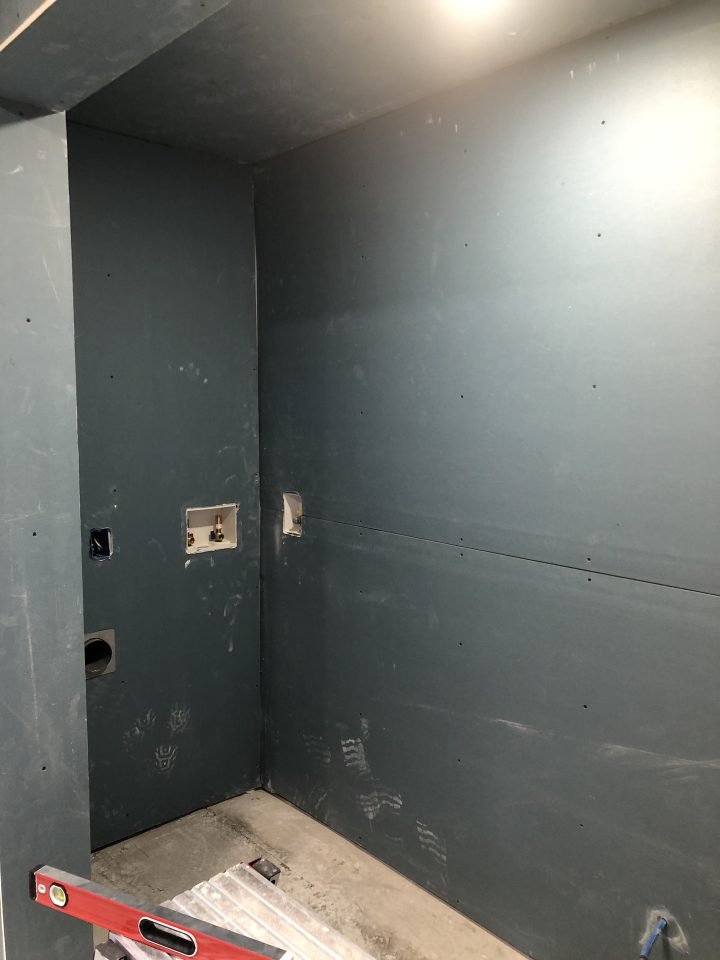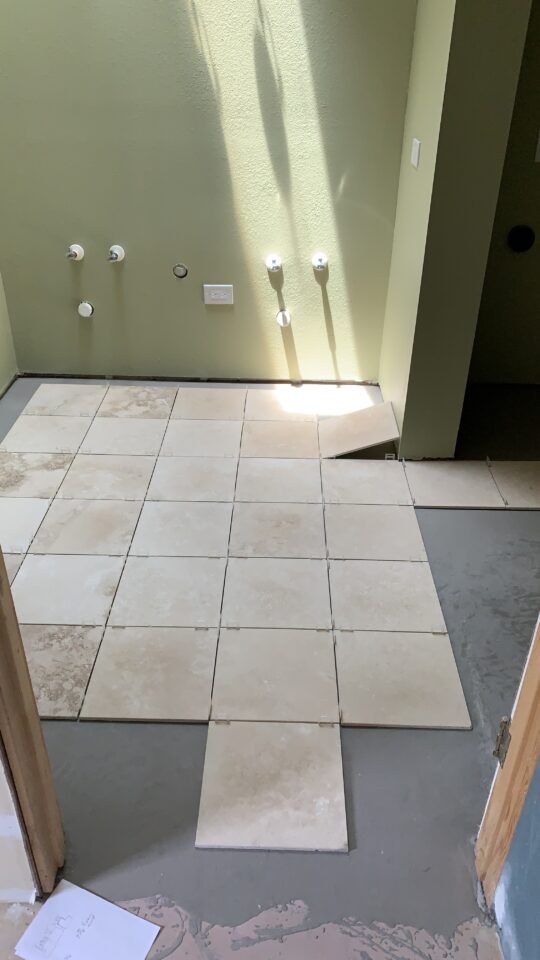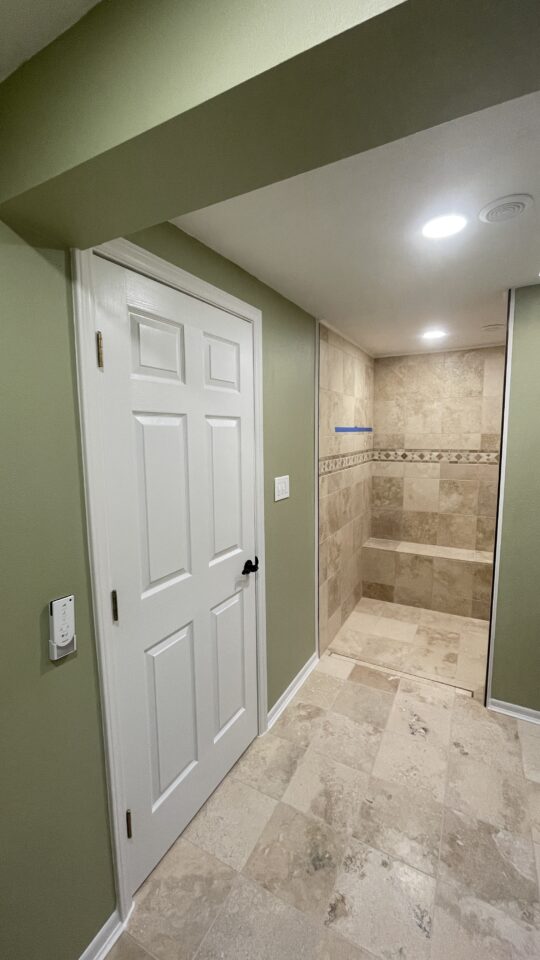Now it’s time to prepare the floor for tiling. We will be using a self-leveling underlayment cement. This is like a very thin cement. No sand, rock or reinforcing in the mix. Not strong but provides a thin level cement surface to lay the tile on.
I started by using my laser level and setting the drain to 0. From there I measured all the areas of the floor to establish a slope to the drain. This let me know where I needed to put extra underlayment to achieve the slope I wanted.
I did not do any measurements in the shower area as I will explain what I am doing there later.
After I had the numbers I needed I painted a bonding agent onto the existing cement. This bonding agent attaches to the cement and provides a surface for the self-leveling underlayment to attach to.
When mixing the self-leveling underlayment cement prepare it exactly as the instructions say. This will allow it to flow and level itself. I put a block in at the drain so it would not run over.
After the self-leveling underlayment cement had cured it was time to start tiling.

